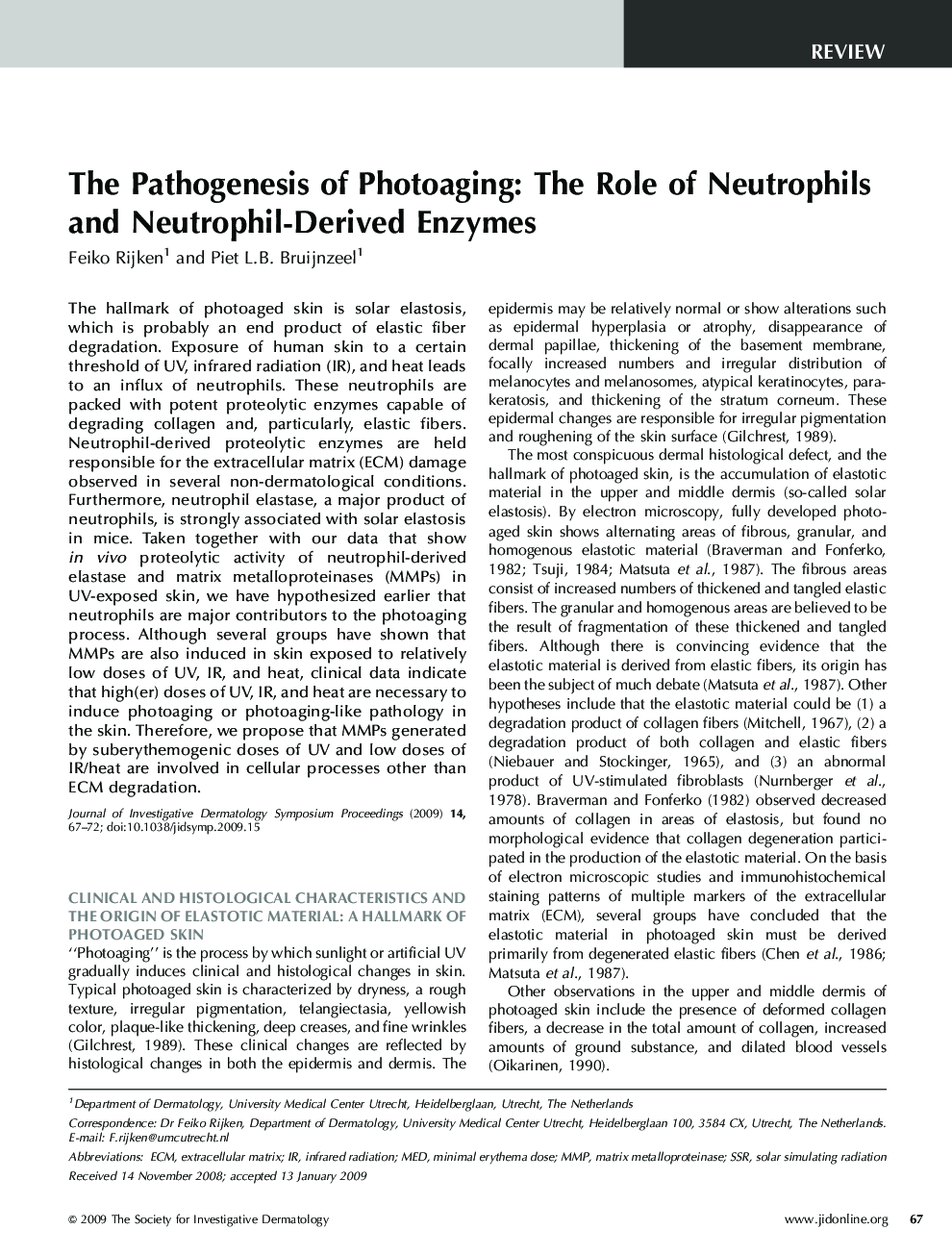| Article ID | Journal | Published Year | Pages | File Type |
|---|---|---|---|---|
| 3218984 | Journal of Investigative Dermatology Symposium Proceedings | 2009 | 6 Pages |
The hallmark of photoaged skin is solar elastosis, which is probably an end product of elastic fiber degradation. Exposure of human skin to a certain threshold of UV, infrared radiation (IR), and heat leads to an influx of neutrophils. These neutrophils are packed with potent proteolytic enzymes capable of degrading collagen and, particularly, elastic fibers. Neutrophil-derived proteolytic enzymes are held responsible for the extracellular matrix (ECM) damage observed in several non-dermatological conditions. Furthermore, neutrophil elastase, a major product of neutrophils, is strongly associated with solar elastosis in mice. Taken together with our data that show in vivo proteolytic activity of neutrophil-derived elastase and matrix metalloproteinases (MMPs) in UV-exposed skin, we have hypothesized earlier that neutrophils are major contributors to the photoaging process. Although several groups have shown that MMPs are also induced in skin exposed to relatively low doses of UV, IR, and heat, clinical data indicate that high(er) doses of UV, IR, and heat are necessary to induce photoaging or photoaging-like pathology in the skin. Therefore, we propose that MMPs generated by suberythemogenic doses of UV and low doses of IR/heat are involved in cellular processes other than ECM degradation.
